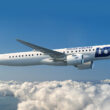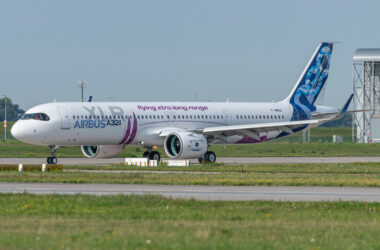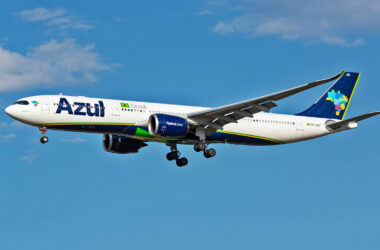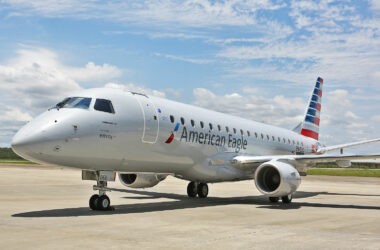Airbus considers type certification of the A321XLR to be “imminent” and will occur first with the variant equipped with CFM LEAP-1A engines, followed in due course by the model powered by Pratt & Whitney GTF turbofans.
The ultra-long-range narrow-body aircraft has completed the production of technical documents required by EASA, Europe’s civil aviation agency, and is awaiting assessment for approval before the first delivery to Iberia, its launch customer.
Launched in 2019, the A321XLR is a variant modified to be capable of flying distances of up to 4,700 nm (8,700 km), sufficient to operate on transoceanic routes as a replacement for widebodies.
Follow Air Data News: WhatsApp | Google News | Instagram | LinkedIn | Twitter | Facebook

The program was launched in 2019 and in these five years 1,450 hours of testing were carried out with three prototypes, the MSN11000, with CFM engines, the MSN11058, with P&W engines, and the MSN11080, which received a complete cabin to carry out flights with passengers.
Although it is very similar to other A321neos, the new aircraft has significant differences.
These include new single-slot internal flaps, an updated flight control system, improved landing gear wheels and brakes, a new fuel system, a new water and waste system, and an improved cabin heating system for long-range operations.

Larger fairing as “cushion”
But the clearest change is the addition of the Rear Centre Tank (RCT), a conformal compartment with a capacity of 12,900 liters installed in the rear part of the fuselage, at the height of the aircraft’s trailing edge.
A cause for concern among civil aviation authorities, the tank had to undergo numerous tests to prove that it is safe.
As it is located directly below the passenger cabin, it was necessary to reinforce its surroundings to prevent fires. One of the actions was to install a new external fairing, larger and reinforced, which works as a “cushion” so that the jet can slide in the event of a belly landing.

The enormous work required turned the program into a task akin to launching a completely new plane, Airbus says.
Around 2,500 employees were involved in the project and it was necessary to create new facilities for assembling the aircraft in Hamburg.
After more than 510 completed flights, the A321XLR is close to its big moment and proving that a twin-engine single-aisle jet can do the work of large aircraft at a fraction of the cost.






